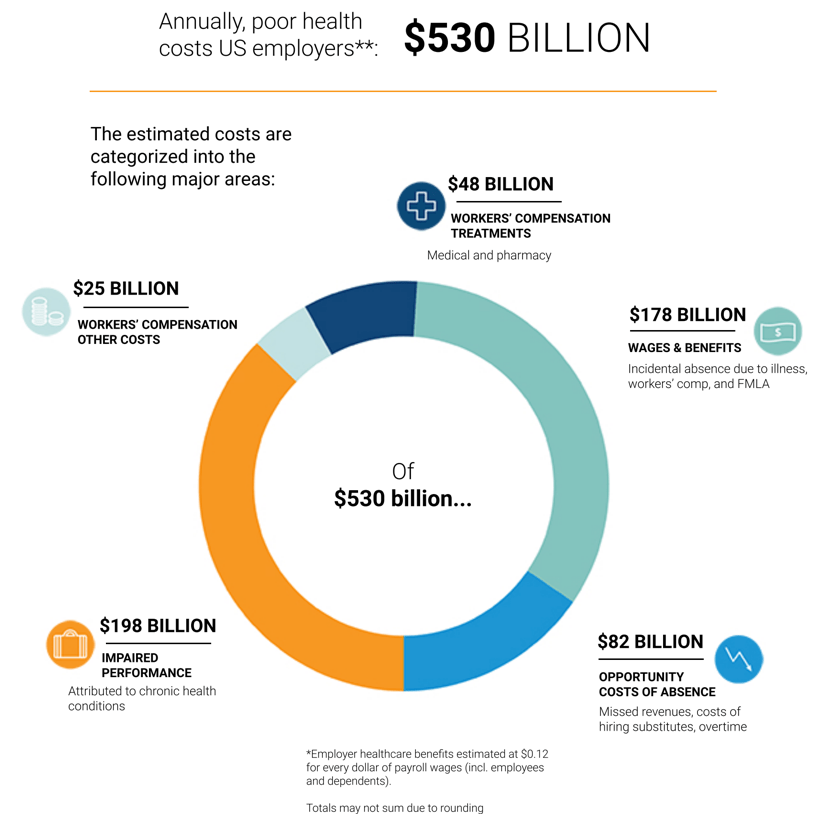Many employers across the world are finalizing budgets for the coming year, and for some human resource professionals, this includes justifying the investment in employee wellness programs. Fortunately, new research from the Integrated Benefits Institute (IBI), a nonprofit health and productivity research organization, may provide some data to help bolster the case for these types of programs. According to the data, illness-related lost productivity costs U.S. employers $530 billion per year. When compared to the $880 billion spent on healthcare benefits for employees and dependents, the cost of lost productivity certainly changes the focus of the conversation, especially for organizations with employees working in countries with nationalized health care systems.
Our research helps employers understand what ill health really costs their businesses so that investments in health and productivity are more informed and more effective. It’s critical that employers understand how strategies for managing health care spend – such as cost shifting to employees or ensuring better access and more cost-effective care – can impact the kinds of conditions that drive illness-related lost productivity.
– Brian Gifford, PhD, Director, Research and Analytics for IBI
Specifically, a huge component of the loss in productivity derives from absenteeism (missing work due to an illness) and presenteeism (working at less than full capacity). Employees covered for sick time, workers’ compensation, disability, and family and medical leave benefits miss 893 million days of work due to illness (absenteeism) and incur an estimated 527 million lost work days due to impaired performance (presenteeism). This totals almost 1.4 billion impacted works days annually!
IBI broke down the components of the $530 billion in lost productivity into five categories: (i) wages and benefits, (ii) opportunity costs of absence, (iii) impaired performance, (iv) workers’ compensation and other costs, and (v) workers’ compensation treatments.

Traditionally, companies justified investments in employee wellness programs strictly based on potentially lowering health care expenses. This is why wellness programs were primarily adopted by self-insured employers, as these companies would be able to capture all of the financial rewards from lower utilization of health care. This blog post will not go into how the dream of generating a return-on-investment strictly from lower medical expenses does not exist (despite what other vendors may say). Rather, the goal is to demonstrate that value-on-investment (VOI) in employee wellness programs does exist, and employee productivity is just one example of how.
A VOI perspective considers financial and non-financial gains from employee wellness programs beyond those associated with medical claims. Examples of VOI measures are productivity, job satisfaction, retention, and others. By broadening the expectations of what benefits an employee wellness program can reasonably provide, employers can build a stronger and more accurate case for why they should have one.












